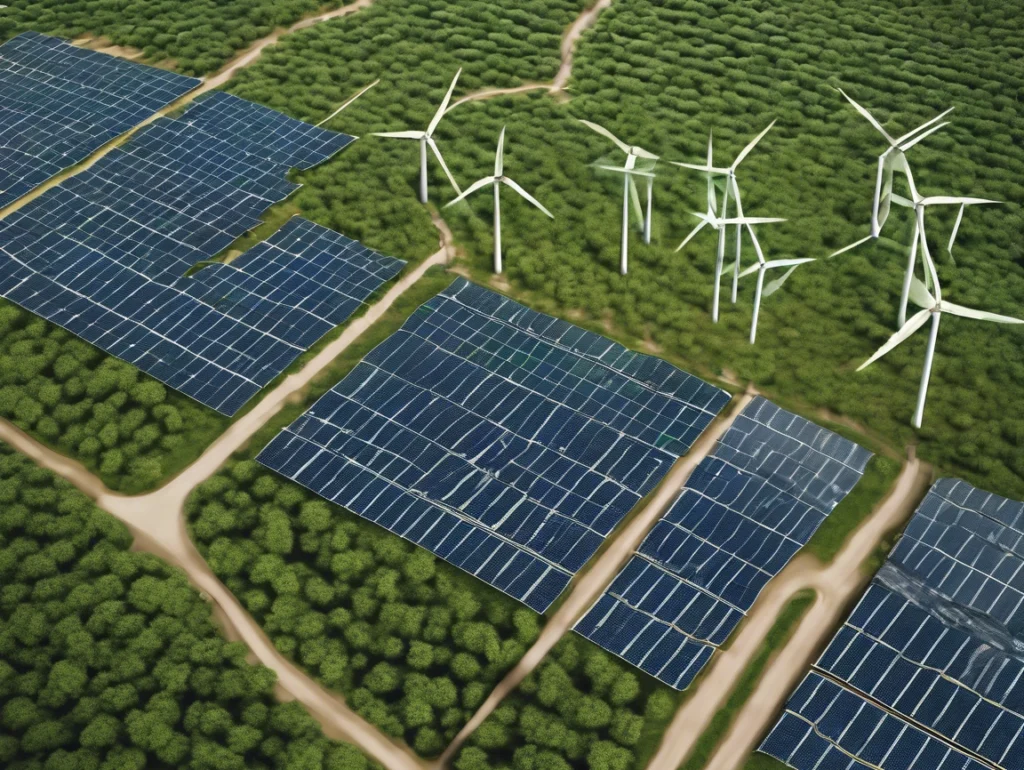In the global race towards a sustainable future, green technology stands as our most promising champion. From electric vehicles silently gliding down highways to towering wind turbines harnessing the power of nature, these innovations are reshaping our world. But beneath the surface of many of these transformative solutions lies a crucial, often unsung hero: Neodymium. This rare-earth metal is far more than just a component; it's the magnetic backbone of modern clean energy systems and a vital element in the push for carbon capture.
The Magnetic Marvel: What is Neodymium?
Neodymium is a silvery-white metal belonging to the lanthanide series, commonly known as rare-earth elements. While not as rare as their name suggests, their extraction and processing are complex. The true magic lies in its ability to form incredibly powerful permanent magnets when alloyed with iron and boron (NdFeB magnets). These magnets are the strongest commercially available, making them indispensable for applications requiring high magnetic strength in compact sizes.
Neodymium's Crucial Role in Green Tech
The demand for is soaring, directly proportional to the growth of green technology. Its unique magnetic properties enable significant advancements across several critical sectors:
1. Wind Turbines: Powering the Wind Revolution
Imagine a massive wind turbine, its blades gracefully slicing through the air, converting kinetic energy into electricity. At the heart of many modern wind turbines, especially direct-drive models, are generators packed with magnets. These magnets allow for more efficient energy conversion, even at low wind speeds, increasing the overall energy output. Their power density also allows for smaller, lighter generator designs, simplifying installation and reducing maintenance – particularly vital for offshore wind farms. This makes Neodymium a cornerstone of renewable energy infrastructure. (Source: Eurobalt, “Neodymium Magnets in Renewable Energy Technologies”)

2. Electric Vehicles (EVs): Driving the Future of Transport
The rapid transition to electric vehicles is a significant pillar of clean energy. Every EV motor requires powerful, efficient magnets, and Neodymium is the material of choice for permanent magnet synchronous motors (PMSMs). These motors offer superior torque, speed, and energy efficiency, directly impacting an EV's range and performance. Neodymium magnets contribute to the compact design of EV motors, which in turn reduces the vehicle's overall weight, making EVs more competitive with traditional internal combustion engine cars. (Source: ALB Materials Inc., “Sustainable Technologies and the Role of Neodymium Magnets”)

3. Carbon Capture Solutions: Tackling Emissions Head-On
While the direct use of Neodymium in carbon capture is less prevalent than in motors or generators, its broader contribution to environmental technology is undeniable. Efficient clean energy generation reduces the need for fossil fuels, which are major sources of carbon emissions. Furthermore, research in advanced materials for carbon capture and utilization (CCU) sometimes involves novel magnetic separation techniques, where strong magnetic fields could play a role. Companies like Bloom Energy green solutions are integrating fuel cell technology with partners for carbon capture to reduce emissions from hard-to-abate industries, indirectly relying on the overall infrastructure built with green tech components like those using Neodymium. (Source: Hydrogen Fuel News, “Bloom Energy's Latest Advancements And Market Insights”)
While nanoparticles are currently a more direct focus for enhancing CO2 absorption in carbon capture (Source: Nanografi Advanced Materials, “Nanoparticles Usage in Carbon Capture Technology”), the broader push for efficient green technology enabled by Neodymium certainly contributes to a reduced carbon footprint. For industries looking to buy carbon capture solutions, the efficiency gained from Neodymium-powered processes can contribute to overall cost-effectiveness.
The UK Green Tech Market and Global Impact
The UK green tech market is a thriving ecosystem, reflecting a global commitment to environmental technology. In 2025, the UK green technology market is projected to reach £125 billion, with renewable energy, a heavy user of Neodymium, holding the largest share. (Source: Aaron Wallis Sales Recruitment, “Green Technology Sales Market Report 2025”) This growth signifies the increasing adoption of solutions that rely on critical materials like Neodymium to power homes, transport, and industries. The global demand for Neodymium is expected to surge as countries strive to meet net-zero carbon emissions targets by 2050, highlighting its strategic importance.
The Future of Neodymium in Green Tech
As green technology continues to evolve, the demand for Neodymium is set to intensify. Innovations in recycling Neodymium from end-of-life products like wind turbines and EV motors are crucial to ensure a sustainable supply chain and mitigate environmental impacts associated with mining rare-earth elements. Research into alternative magnet materials is also ongoing, but for the foreseeable future, Neodymium remains an indispensable component in our journey towards a cleaner, more sustainable planet.
Want to Explore More?
Read our latest piece: Green Technologies of the Future: Which Developments Will Save the World?.
Comment below: What’s your take on the environmental cost of green tech?
Tag us on social media using #GreenTechRealityCheck
nature.com+7thenevadaindependent.com+7lithiumharvest.com+7
Have questions or thoughts? Comment below and let us know what more you’d like to learn about green technology—we’d love to hear from you!








